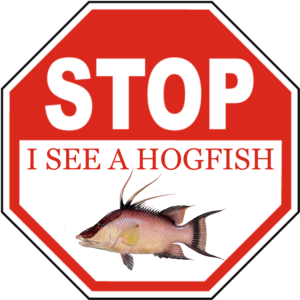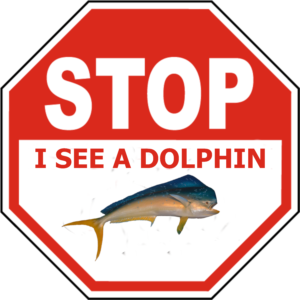At its May meeting, the Florida Fish and Wildlife Conservation Commission (FWC) approved a temporary modification to the 2022 recreational blueline tilefish season in Atlantic state waters. The 2022 recreational season for blueline tilefish will be open May 1 – July 25 in state waters, closing July 26.
Typically, the blueline tilefish season is open May 1 – Aug. 31 in Atlantic state and federal waters. However, NOAA Fisheries projects that the recreational catch limit will be met by July 26 and is closing the fishery to prevent overfishing from occurring. Modifications to the recreational season in state waters is consistent with the recent changes in federal waters.
For more information, including the May 2022 Commission meeting presentation, visit MyFWC.com/Commission and click on “Commission Meetings.”
For current recreational blueline tilefish regulations, visit MyFWC.com/Marine and click on “Recreational Regulations” and “Blueline tilefish.” This page will be updated with the new regulations when they take effect.
Source: FWC modifies 2022 blueline tilefish recreational season for Atlantic state waters
About the Species
Blueline tilefish are found Maine to Campeche, Mexico on the outer continental shelves, shelf breaks, and upper slopes. The blueline tilefish fishery in the Greater Atlantic Region of the U.S. is managed from Maine through Virginia, with the majority of the fishery concentrated between Nantucket Island, Massachusetts, south to Cape May, New Jersey; more specifically between Hudson and Veatch Canyons. The commercial fishery predominantly uses longline gear, although handline, rod and reel, and trawl gear are also authorized. The recreational fishery has no gear restrictions, but rod and reel and spear are the most common gears used based on the authorized possession limits. Market data is not yet available for the Mid-Atlantic blueline tilefish fishery north of the VA/NC border. U.S. wild-caught blueline tilefish is a smart seafood choice because it is sustainably managed and responsibly harvested under U.S. regulations. Implementing regulations are found at 50 CFR part 648 subpart N.
Population
In the South Atlantic, above target population levels. In the Mid-Atlantic and Gulf of Mexico, the population level is unknown, but presumed stable.
Fishing Rate
In the Mid-Atlantic, South Atlantic, and Gulf of Mexico, at recommended levels.
Population Status
- There are three stocks of blueline tilefish: the Mid-Atlantic stock, the South Atlantic stock, and the Gulf of Mexico stock. According to the most recent stock assessments:
- The Mid-Atlantic stock has not been assessed so the population status is unknown.
- The South Atlantic stock is not overfished (2017 stock assessment), and is not subject to overfishing based on 2018 catch data. Summary stock assessment information can be found on Stock SMART.
- The Gulf of Mexico stock is managed as part of the Tilefish Complex and has not been assessed so the population status is unknown. This complex is not subject to overfishing based on 2018 catch data.
Appearance
- Blueline tilefish get their name from a narrow gold stripe underlined in blue that runs from their snout to the tip of their eye.
- They have a long snout and are a dull olive-gray on the top of their body and white on the bottom.
- They have long, continuous dorsal and anal fins that are more than half the length of their body.
- Unlike golden tilefish, they do not have a large adipose flap (crest) on their head.
Biology
- Blueline tilefish can grow to be 35 inches long and live up to 26 years.
- Males can grow larger than females.
- Female blueline tilefish mature when they are about 3 years old.
- They can spawn year-round, but peak spawning is in May. Spawning primarily occurs at night.
- Females can lay more than 4 million free-floating eggs.
- Blueline tilefish feed primarily on invertebrates that live near the sea floor, such as crabs, shrimp, snails, worms, sea urchins, and small fish.
- Recent genetic studies suggest that the U.S. Atlantic population of blueline tilefish is continuous from the northeastern Gulf of Mexico, around the Florida Keys, and up through the Mid-Atlantic region.
Where They Live
- Blueline tilefish are commonly found in the western Atlantic from Campeche, Mexico, to Hudson Canyon, off the coast of Maryland, including the eastern Gulf of Mexico.
- There are reports of catches as far north as Maine and as far west as Texas.
Fishery Management
- The Mid-Atlantic, South Atlantic, and Gulf of Mexico Fishery Management Councils develop management measures for the blueline tilefish fisheries in their respective jurisdictions. NOAA Fisheries is responsible for implementing and enforcing these measures.
- The Mid-Atlantic Tilefish Fishery Management Plan measures for blueline tilefish include:
- Permit requirements for commercial and for-hire vessels.
- Annual catch limits for the commercial and recreational fisheries.
- Limits on commercial possession. The fishery is closed if the landing limit is harvested.
- Closed season and bag limit for recreational anglers.
- For more information on current management, see the NOAA Fisheries Greater Atlantic Regional Fisheries Office’s Tilefish page.
- The South Atlantic Snapper Grouper Fishery Management Plan measures for blueline tilefish include:
- Permit requirements.
- Annual catch limits.
- Limits on the number or pounds of blueline tilefish commercial and recreational fishermen may harvest during a fishing trip.
- Prohibition of longline gear in certain areas to protect snapper-grouper species and live-bottom habitat.
- For more information on current management, see the NOAA Fisheries Southeast Regional Office’s South Atlantic Snapper-Grouper page.
- The Reef Fish Resources of the Gulf of Mexico Fishery Management Plan blueline tilefish measures include:
- Annual catch limits for both the commercial and recreational fisheries.
- An Individual Fishing Quota program for the commercial fishery.
- Restrictions on the seasons, areas, and depths where longlines can be used, to protect reef fish, sea turtles, and bottom habitat.
- For more information on current management, see the NOAA Fisheries Southeast Regional Office’s Gulf of Mexico Reef Fish page.
Harvest
- Commercial fishery:
- In response to the stock assessment in 2013, more restrictive regulations were implemented in the South Atlantic’s Snapper-Grouper FMP and commercial landings declined by half.
- In 2017, management measures were developed by the Mid-Atlantic Council.
- In 2019, commercial landings of blueline tilefish totaled 261,000 pounds and were valued at $635,000, according to the NOAA Fisheries commercial fishing landings database. These figures may not match other agency sources of data due to confidential information.
- 2019 landings occurred in Connecticut, Rhode Island, New York, New Jersey, Virginia, North Carolina, South Carolina, Florida, Louisiana, and Texas. The highest landings were in North Carolina and Florida.
- Gear types, habitat impacts, and bycatch:
- Commercial fishermen mainly use longline and vertical hook-and-line gear to harvest blueline tilefish.
- Sea turtles, marine mammals, smalltooth sawfish, and reef fishes can be incidentally caught while fishing for blueline tilefish.
- Commercial reef fish fishermen in the South Atlantic and Gulf of Mexico must use “release gear” and follow safe-handling protocols to increase the chance of survival for incidentally caught protected species, like sea turtles and smalltooth sawfish.
- To further reduce bycatch, the use of trawl gear, fish traps, and bottom longlines are prohibited in certain areas of the South Atlantic, and several areas are also closed to all fishing to protect snapper and grouper species.
- To protect reef fish, sea turtles, and bottom habitat in the Gulf of Mexico, there are restrictions on the areas and depths where longlines can be used.
- In the Gulf of Mexico and certain areas of the South Atlantic, fishermen are required to use circle hooks to reduce injury to any unintentional catch.
- Recreational fishery:
- In 2019, recreational anglers caught 159,000 pounds of blueline tilefish.
- Charterboat/headboat reef fish fishermen in the South Atlantic and Gulf of Mexico must use de-hooking devices and follow safe-handling protocols to increase the chance of survival for incidentally caught protected species, like sea turtles and smalltooth sawfish.
- In the Mid-Atlantic, for-hire vessels are required to have a permit and report catch, and recreational anglers can keep a limited number of blueline tilefish per fishing trip.
- In the South Atlantic, blueline tilefish are included in the daily aggregate grouper bag limit for recreational fishermen.
- In the Gulf of Mexico, there is a limit on the number of reef fish, including blueline tilefish, that recreational fishermen can keep per day.
These Keys Treasures Designs and many more are available on products such as T-Shirts, Stickers, Magnets, Mugs, Phone Cases, and much more at KeysTreasures.ReBubble.com






